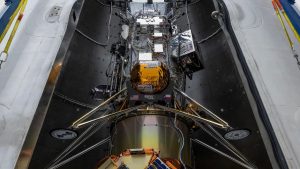Ray Kurzweil Still Says He Will Merge With A.I.

Sitting near a window inside Boston’s Four Seasons Hotel, overlooking a duck pond in the city’s Public Garden, Ray Kurzweil held up a sheet of paper showing the steady growth in the amount of raw computer power that a dollar could buy over the last 85 years.
A neon-green line rose steadily across the page, climbing like fireworks in the night sky.
That diagonal line, he said, showed why humanity was just 20 years away from the Singularity, a long hypothesized moment when people will merge with artificial intelligence and augment themselves with millions of times more computational power than their biological brains now provide.
“If you create something that is thousands of times — or millions of times — more powerful than the brain, we can’t anticipate what it is going to do,” he said, wearing multicolored suspenders and a Mickey Mouse watch he bought at Disney World in the early 1980s.
Mr. Kurzweil, a renowned inventor and futurist who built a career on predictions that defy conventional wisdom, made the same claim in his 2005 book, “The Singularity Is Near.” After the arrival of A.I. technologies like ChatGPT and recent efforts to implant computer chips inside people’s heads, he believes the time is right to restate his claim. Last week, he published a sequel: “The Singularity Is Nearer.”
Now that Mr. Kurzweil is 76 years old and is moving a lot slower than he used to, his predictions carry an added edge. He has long said he plans to experience the Singularity, merge with A.I. and, in this way, live indefinitely. But if the Singularity arrives in 2045, as he claims it will, there is no guarantee he will be alive to see it.







